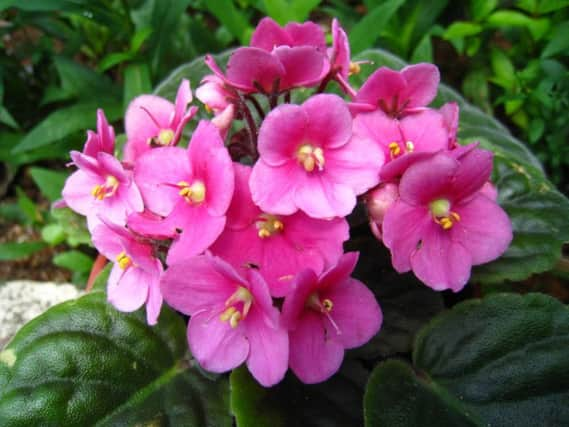From Tanzania with love from the baron


Let’s hope Pam is right because our garden has never been so wet. It is foolish to even try to walk on the lawn so this week I shall talk about our favourite streptocarpus plants in the greenhouse, or African Violets which everyone loves.
African Violets are still one of the best-selling plants because they flower for such a long time. About one home in three has at least one of these pretty little gems.
Advertisement
Hide AdAdvertisement
Hide AdThey were introduced into Britain by Baron von Saint Paul-Illaire in 1892 and the original Saintpaulia was growing in the wild in Tanzania.
The beautiful varieties which enjoy our homes are hybrids and there are dozens of them in a range of colours going from white, pink, blue and purple, to reds and even stripes.
They all enjoy lots of light in well-drained compost and grow especially well in plastic pots.
A five-inch one is the maximum size and the best array of flowers is attained in pots which are crammed full of roots.
Advertisement
Hide AdAdvertisement
Hide AdWhen the plants became popular about 1910, books at that time recommended they were grown in three-inch diameter pots placed in containers with cobbles in the base and the cobbles had to be kept wet all the time.
This was fine until winter came along and the plants died because they were too wet!
It is quite true they enjoy a moist atmosphere which ensures the longest period of flowering, but this must be combined with regular feeding from April until September – just once a fortnight using soluble food for tomatoes.
Like most plants, Saintpaulias enjoy plenty of light, but hot sunshine quickly affects the production of flower buds. So direct hot sun has to be avoided.
Advertisement
Hide AdAdvertisement
Hide AdIf you have a collection (you may be growing them in an attractive tray) have you tried using capillary matting in the base? This makes watering and feeding a cinch.
Just keep the matting wet and the compost will take in exactly what it needs without the risk of drowning.
Have you got an aquarium without fish? Why not bring it back to life.
Place a three-inch layer of attractive aggregate in the base and push in the plants in three-inch diameter pots. Put a light bulb into the lid of the aquarium and join lots of other ardent gardeners who are into recycling by placing the aquarium in part of a room which needs an attractive light. It will look great.